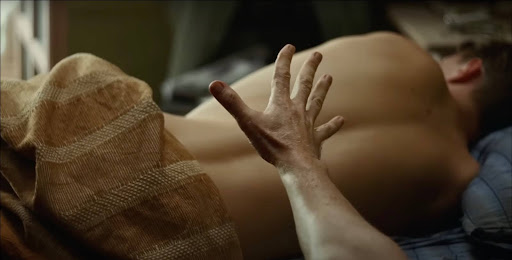The scratching of chairs against the tile floor greeted students, arriving at 5 P.M. Nov. 17, into the small Marillac classroom 234. Around forty students attended the viewing of “Persepolis” sponsored by the Department of Art and Design and Women’s and Gender Studies here at St. John’s University. The event was such a success that chairs had to be dragged in from other classrooms to squeeze into the tight space where the movie was being screened and pizza being served.
“Persepolis” functions in a flashback narrative; the main character Marjane Satrapi reflects on her childhood after being denied from her flight.
The audience follows her through her early life in Iran, living with and around revolutionary relatives, to her life in Vienna, Austria where she was sent by her parents to escape harsh realities in Iran after the Islamic Fundamentalists assumed control. She eventually makes her way back to Iran until the film finds her where it began, leaving the country and arriving in Paris, France.
This film was the passion project of its screenwriter and director, Marjane Satrapi. Originally published as an autobiographical graphic novel, the film chronicles her life and the life of Iran in a way that was very enlightening to its viewers.
She illustrates the injustices of the Shah of Iran, the Islamic Fundamentalists, the double standard system of modesty and the Iran-Iraq War in ways that verberate with audiences more than history books would ever capable of doing.
Not only did the film reveal things from a historical perspective but a personal one as well; Majane is an extremely likeable main character, rife with attitude and rebellion. The audience follows her as she deals with the common immigrant identity issues of displacement and shame and broader issues such as depression and divorce.
“I loved the movie a lot; you don’t get a lot of media about Middle Eastern women, especially in animation. It was relatable and eye opening and I’m interested in reading the graphic novel because of it,” freshman photography major, Madeline Mancini said.
Although it was originally purposed to be a seen from an artistic perspective, the film took on a broader meaning as the night went on.
“It could kind of be an inspiration for allowing people to relay their own emotions and stories through the graphic process of storytelling,” Gansell explained. She organized the event partly to “remind people that contemporary art can include many things, including film, including graphic novels and that the stories that we learn about from history are also stories we tell today.”
In a time where differences can tear people apart and create divides in communities, a film that humanizes others’ experiences is very much required viewing.
“It’s a really timely film to show, although it’s from several years ago, but the issues of discrimination that she faced and the insecurities that she had about her own identity – saying she’s from Paris, when she’s from Iran – and showing the value of embracing who you are and finding acceptance and for others learning to accept other people and appreciate their stories and backgrounds and not to stereotype or trivialize,” Gansell reflected on what attendees could take away from the event.
The event allowed its attendees to learn about another’s culture and life story, another who could not be present at the time. Events like these grant students the ability to listen to the numerous platforms out today that allow us a glimpse into these life stories.
All attendees, including myself, walked away with a newfound perspective on family, culture and country.









